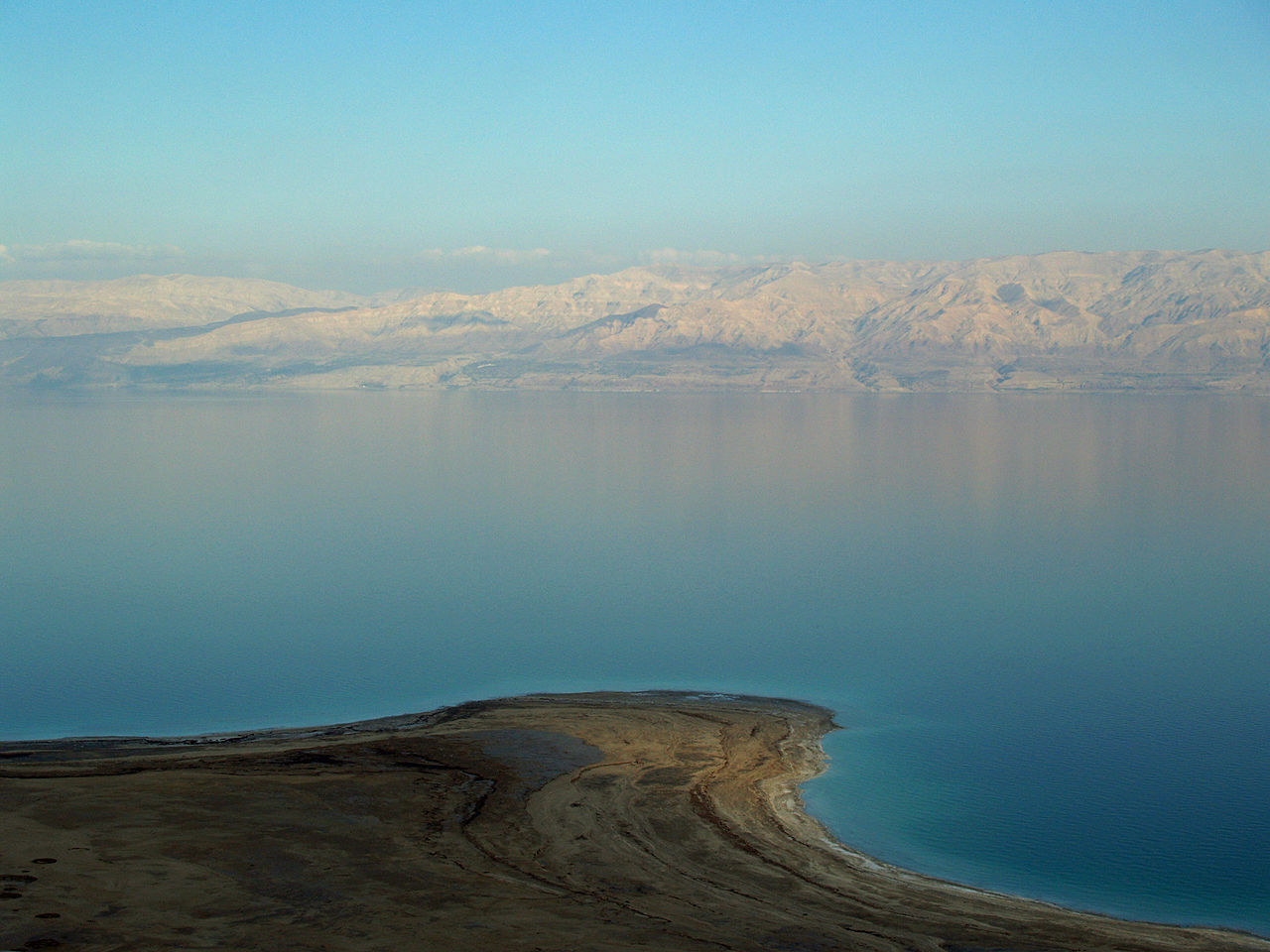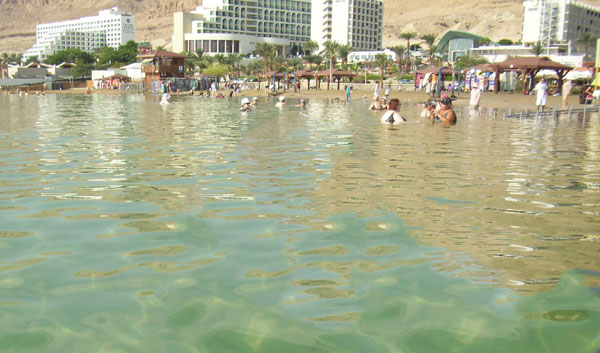The Dead Sea (Hebrew: יָם הַמֶּלַח About this sound Yam ha-Melah lit. Salt Sea, Arabic: البحر الميت About this sound Al-Bahr al-Mayyit[5]), is a salt lake bordered by Jordan to the east and Israel and Palestine to the west. Its surface and shores are 430.5 metres (1,412 ft) below sea level, Earth's lowest elevation on land. The Dead Sea is 304 m (997 ft) deep, the deepest hypersaline lake in the world. With a salinity of 342 g/kg, or 34.2%, (in 2011), it is 9.6 times as salty as the ocean, and one of the world's saltiest bodies of water. This salinity makes for a harsh environment in which plants and animals cannot flourish, hence its name. The Dead Sea is 50 kilometres (31 mi) long and 15 kilometres (9 mi) wide at its widest point. It lies in the Jordan Rift Valley and its main tributary is the Jordan River.
The Dead Sea has attracted visitors from around the Mediterranean basin for thousands of years. It was one of the world's first health resorts (for Herod the Great), and it has been the supplier of a wide variety of products, from asphalt for Egyptian mummification to potash for fertilizers. People also use the salt and the minerals from the Dead Sea to create cosmetics and herbal sachets.
The Dead Sea water has a density of 1.24 kg/litre, which makes swimming similar to floating.
The Dead Sea is receding at an alarming rate. Multiple canals and pipelines were proposed to reduce its recession, which had begun causing many problems. The Red Sea–Dead Sea Water Conveyance project, carried out by Jordan, will provide water to neighboring countries, while the brine will be carried to the Dead Sea to help stabilize its levels. The first phase of the project is scheduled to begin in 2018 and be completed in 2021












